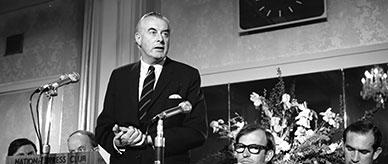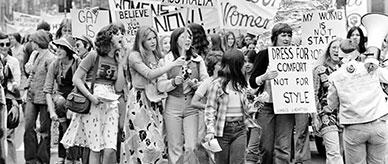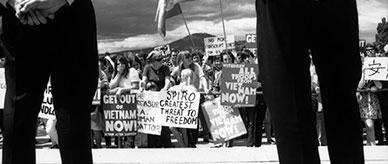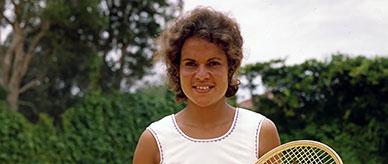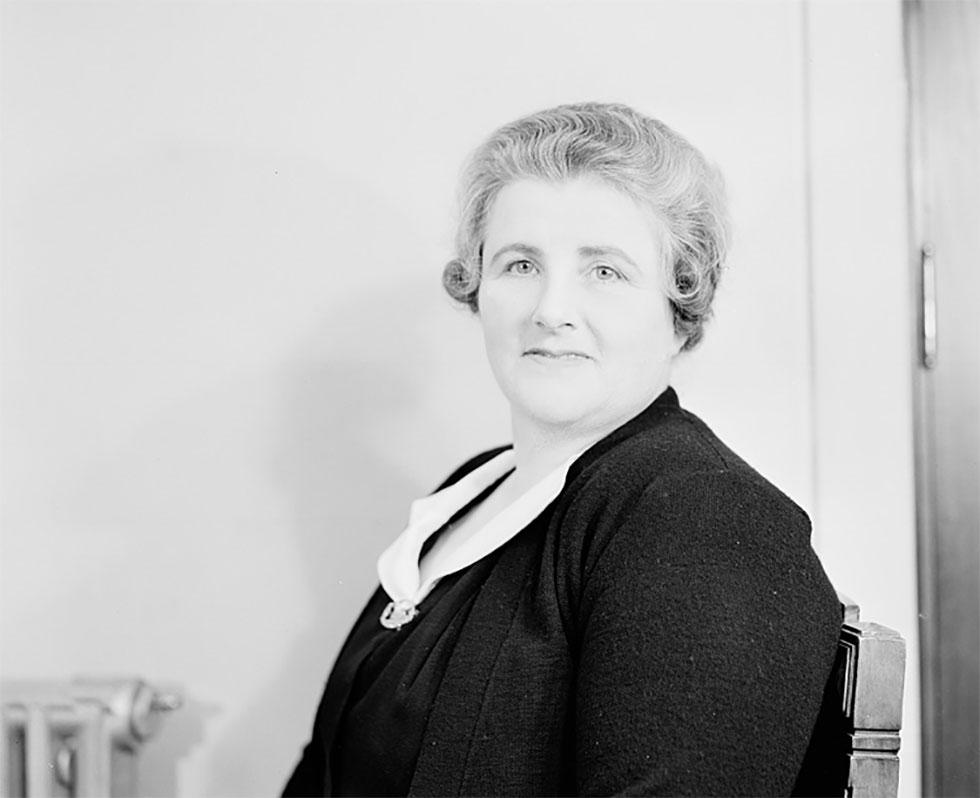


About this record
This is a black-and-white photographic portrait showing Dame Enid Lyons in the year her husband, Prime Minister Joseph Lyons, died. It was taken when she was 42 years old. She is wearing a formal dark-coloured top with a starched white collar, and her hair is brushed with two small curls on either side. The photograph shows Lyons from the waist up sitting in a chair against a plain white wall.
Educational value
- Enid Lyons (1897–1981) was the most successful female politician in Australia in the 1940s and 1950s. She was the first female member of the House of Representatives, and one of the first two women to be elected to the Australian parliament when she won the seat of Darwin in Tasmania for the United Australia Party, later the Liberal Party. She was also the first woman to hold a Cabinet position.
- From a young age, at a time when women's rights were just emerging, Lyons campaigned for women to be involved in politics. Before her election in 1943, her political ambition saw her stand unsuccessfully for the Tasmanian seat of Denison in 1925. Her commitment to politics did not waver after her retirement from parliament in 1951, and she remained active in public affairs until her death in 1981.
- Lyons was committed to improving the situation of women in general. She raised awareness of the importance of maternity care and the need to increase pensions paid to widows. She campaigned to extend child endowment and help returned servicewomen from World War II. Her longstanding commitment was recognised when she was made a Dame Grand Cross of the Order of the British Empire in 1937.
- As the wife of Tasmanian Premier and Australian Prime Minister Joseph Lyons, Lyons was a partner in the most prominent marriage in Australian politics. Married at 17, she was a devoted wife and the mother of 12 children. Despite suffering ill health throughout her life (after breaking her pelvis during the birth of her first child), she maintained a public schedule and was a vigorous supporter of her husband, helping him win the prime ministership in 1932.
- Although Lyons had not wanted her husband Joseph to move into federal politics in the first place, her political counsel, independence and strong will were key elements in his difficult decision to abandon his lifelong Labor loyalties when he crossed the floor of parliament in 1931, and she campaigned extensively alongside him in the tumultuous election campaign of 1931 that swept him and the new United Australia Party into office.
Acknowledgments
Learning resource text © Education Services Australia Limited and the National Archives of Australia 2010.
Related themes
Need help with your research?
Learn how to interpret primary sources, use our collection and more.

